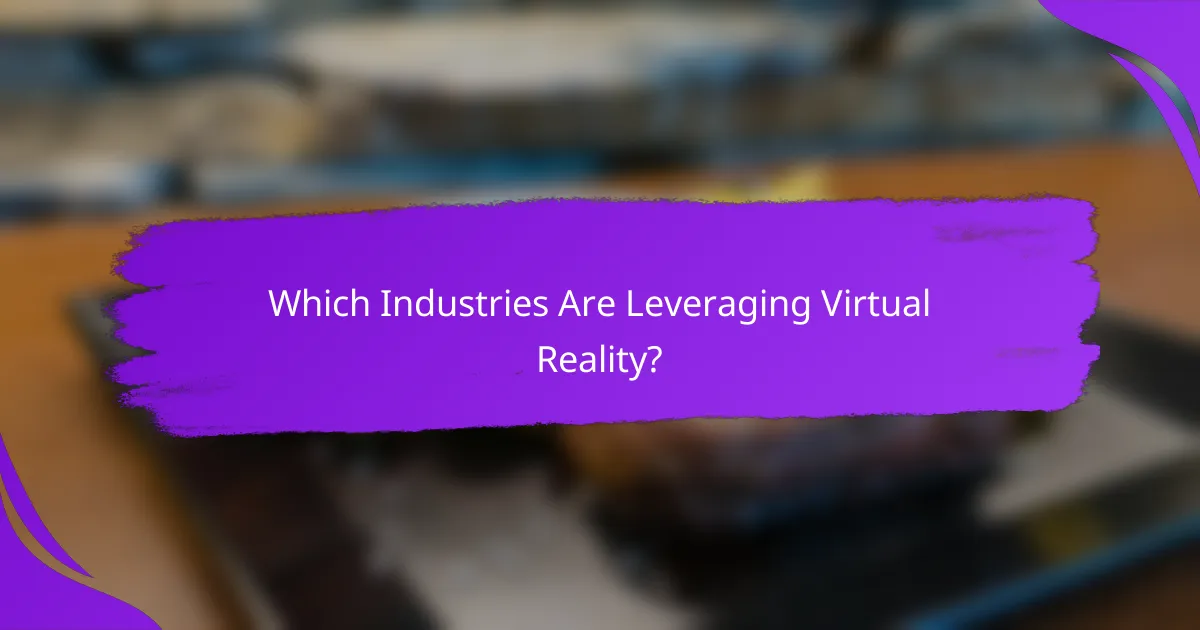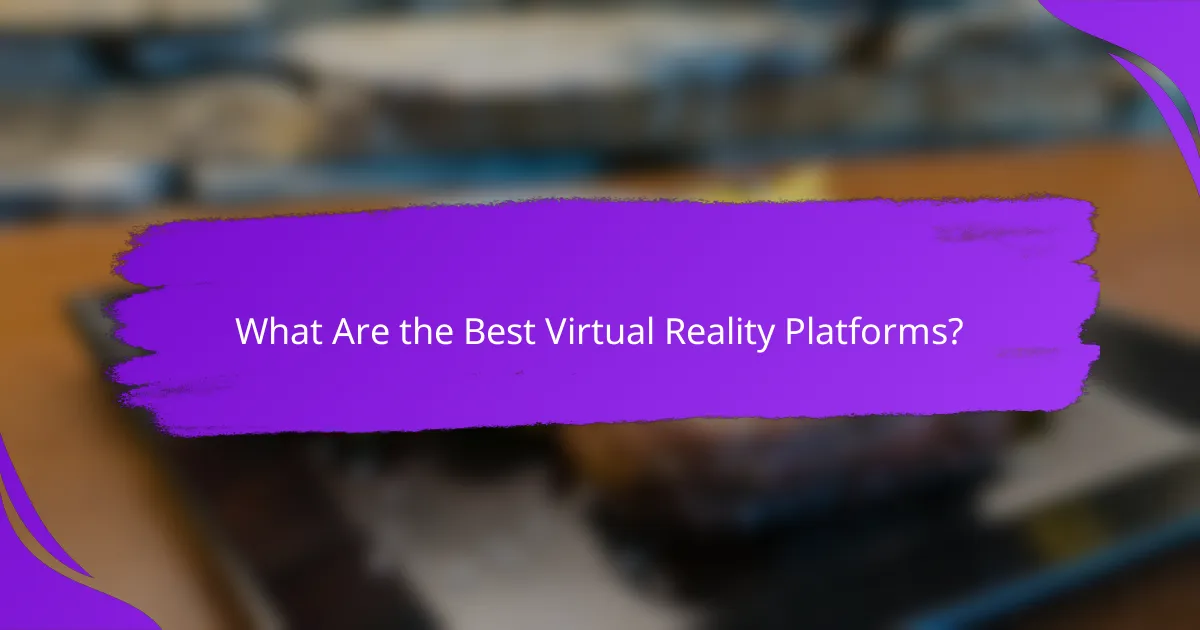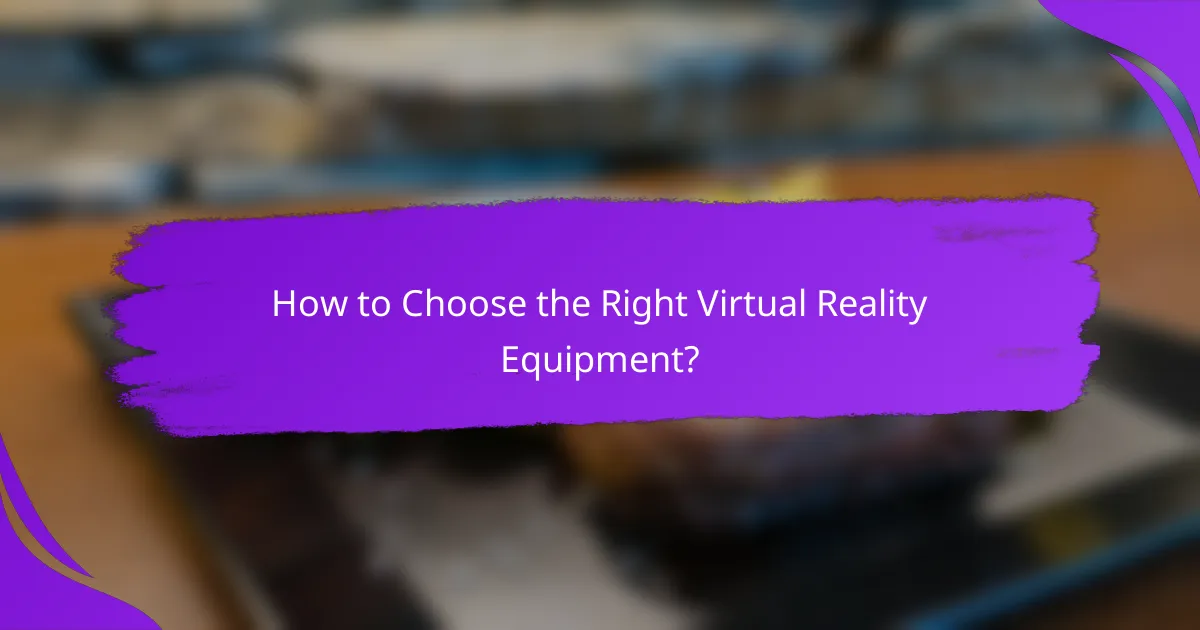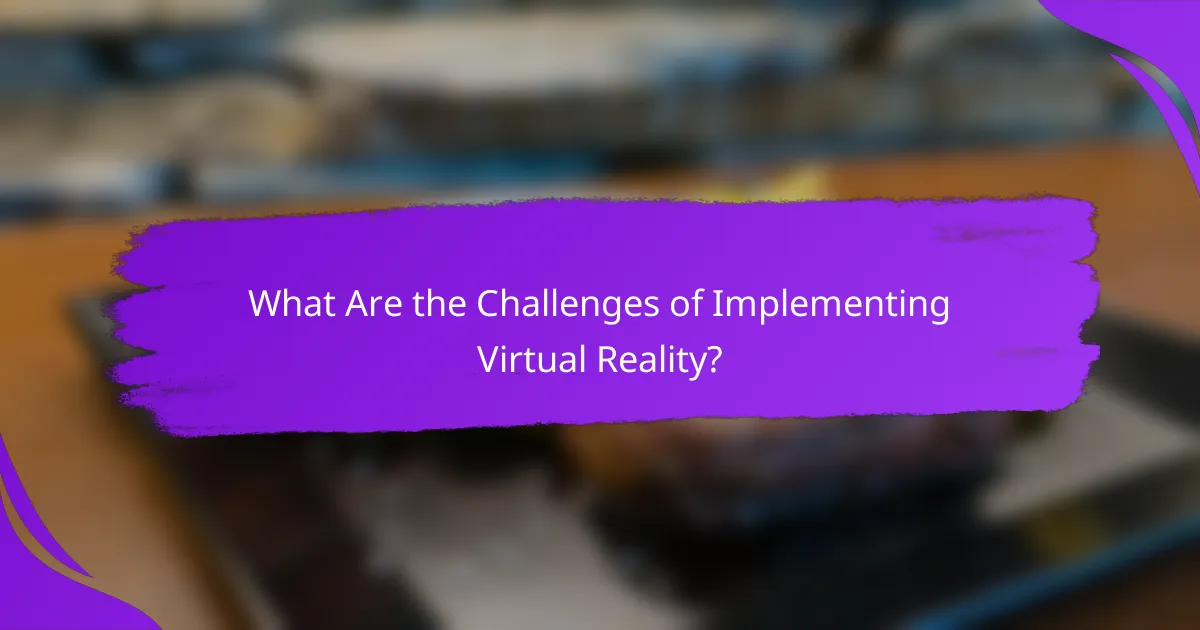Virtual reality (VR) is revolutionizing the way we engage with content by creating immersive environments that captivate users and foster active participation. By simulating real-world experiences, VR not only enhances emotional connections but also improves retention and learning across various sectors, including education, healthcare, and gaming. As industries continue to explore the potential of VR, its ability to transform user experiences becomes increasingly evident.

How Does Virtual Reality Enhance User Engagement?
Virtual reality (VR) enhances user engagement by creating immersive environments that captivate users’ attention and encourage active participation. By simulating real-world experiences, VR fosters deeper emotional connections and a sense of presence that traditional media cannot achieve.
Immersive Experiences
Immersive experiences in VR transport users to different worlds, making them feel as though they are truly part of the environment. This heightened sense of presence can lead to increased emotional responses, making the experience more memorable. For example, VR can simulate a walk through a historical site or an adventure in a fantasy realm, engaging users on multiple sensory levels.
To maximize immersion, developers often focus on high-quality graphics, realistic soundscapes, and intuitive controls. These elements work together to create a seamless experience that keeps users engaged for longer periods.
Interactive Content
Interactive content in VR allows users to influence their environment and outcomes through their actions. This interactivity can take many forms, such as solving puzzles, navigating challenges, or making choices that affect the storyline. By providing users with agency, VR experiences become more engaging and personalized.
For effective interactive content, it’s crucial to design intuitive interfaces that encourage exploration without overwhelming users. Simple mechanics, such as point-and-click or gesture-based controls, can enhance user engagement while maintaining accessibility.
Social Connectivity
VR enhances social connectivity by enabling users to interact with others in shared virtual spaces. This can include multiplayer games, virtual meetings, or social hangouts, where users can communicate and collaborate in real-time. Such interactions can create a sense of community and belonging, which is vital for sustained engagement.
To foster social connectivity, platforms should prioritize user-friendly communication tools, such as voice chat and customizable avatars. These features help users express themselves and build relationships within the virtual environment.
Gamification Techniques
Gamification techniques in VR incorporate game-like elements to motivate users and enhance engagement. This can include rewards, challenges, and leaderboards that encourage users to participate actively and achieve specific goals. By integrating these elements, VR experiences can become more compelling and enjoyable.
When implementing gamification, it’s essential to balance challenge and skill to keep users motivated without causing frustration. Offering incremental rewards and clear objectives can help maintain user interest and encourage continued participation.

What Are the Key Benefits of Virtual Reality?
Virtual reality (VR) offers several key benefits, including enhanced engagement, improved retention, and a more immersive learning experience. These advantages make VR a powerful tool in various sectors, from education to customer service.
Increased Retention Rates
Virtual reality can significantly boost retention rates by creating immersive experiences that engage users on multiple sensory levels. When learners interact with content in a VR environment, they are more likely to remember information compared to traditional methods.
For example, studies suggest that retention rates can improve by 70-90% when using VR for training purposes. This is particularly effective in fields like healthcare and technical training, where practical experience is crucial.
Enhanced Learning Outcomes
VR enhances learning outcomes by providing interactive simulations that allow users to practice skills in a safe environment. This hands-on approach facilitates deeper understanding and mastery of complex concepts.
In educational settings, VR can cater to different learning styles, making it suitable for diverse student populations. For instance, students can explore historical sites or conduct scientific experiments virtually, leading to improved engagement and comprehension.
Improved Customer Satisfaction
Incorporating virtual reality into customer service can lead to higher satisfaction rates by offering personalized and engaging experiences. VR allows customers to visualize products in their own space or try services before committing, which can enhance their decision-making process.
For instance, real estate companies use VR to provide virtual tours of properties, helping potential buyers feel more connected to the listings. This not only saves time but also increases the likelihood of a sale, ultimately leading to happier customers.

Which Industries Are Leveraging Virtual Reality?
Various industries are utilizing virtual reality (VR) to enhance their operations, improve customer engagement, and create immersive experiences. Key sectors include gaming, healthcare, real estate, and education, each applying VR technology in unique ways to meet their specific needs.
Gaming Industry
The gaming industry is one of the most prominent adopters of virtual reality, offering players immersive experiences that traditional gaming cannot match. VR gaming allows users to interact with 3D environments, making gameplay more engaging and realistic.
Popular VR gaming platforms, such as Oculus Rift and PlayStation VR, provide a range of games that cater to different preferences, from action-packed adventures to puzzle-solving experiences. Developers are continually exploring new ways to enhance interactivity and realism, pushing the boundaries of what is possible in gaming.
Healthcare Sector
In the healthcare sector, virtual reality is transforming training and patient care. Medical professionals use VR simulations for training purposes, allowing them to practice procedures in a risk-free environment. This hands-on experience helps improve skills and confidence before working with real patients.
Additionally, VR is being utilized for pain management and therapy. Patients can engage in immersive environments that distract them from pain or anxiety, enhancing their overall treatment experience. Hospitals are increasingly adopting these technologies to improve patient outcomes.
Real Estate Market
The real estate market is leveraging virtual reality to provide potential buyers with immersive property tours. VR technology allows clients to explore homes and commercial spaces remotely, saving time and resources for both buyers and agents.
Real estate companies are using VR to create realistic 3D models of properties, enabling clients to visualize spaces before making decisions. This approach can significantly enhance marketing efforts and streamline the buying process, particularly in competitive markets.
Education Sector
In education, virtual reality is enhancing learning experiences by providing interactive and immersive environments. Students can explore historical sites, conduct virtual science experiments, or engage in simulations that deepen their understanding of complex subjects.
Educational institutions are increasingly incorporating VR into their curricula, offering students unique opportunities to learn through experience. This technology can cater to various learning styles, making education more accessible and engaging for diverse student populations.

What Are the Best Virtual Reality Platforms?
The best virtual reality platforms offer immersive experiences, user-friendly interfaces, and a variety of content. Key options include Oculus Quest 2, HTC Vive Pro, and PlayStation VR, each catering to different user preferences and budgets.
Oculus Quest 2
The Oculus Quest 2 is a standalone VR headset that does not require a PC or external sensors, making it highly accessible. It features a high-resolution display and a wide library of games and experiences, appealing to both casual and dedicated gamers.
Consider its affordability, typically priced under $400, and ease of use, which allows users to set up and start playing within minutes. However, be aware of the requirement for a Facebook account for full functionality, which may deter some users.
HTC Vive Pro
The HTC Vive Pro is designed for high-end users seeking premium VR experiences, offering superior graphics and sound quality. It requires a powerful PC and external sensors for tracking, which can complicate setup but enhances immersion.
This platform is generally more expensive, with costs often exceeding $800 when including necessary accessories. It’s ideal for serious gamers and professionals in fields like design and simulation, but newcomers may find the investment steep.
PlayStation VR
PlayStation VR is a great option for console gamers, compatible with PlayStation 4 and PlayStation 5. It provides a solid library of games, including popular titles and exclusives, making it appealing for those already in the PlayStation ecosystem.
Typically priced around $300, it offers a good balance of quality and affordability. However, users should note that it requires a PlayStation console, which adds to the overall cost if they do not already own one.

How to Choose the Right Virtual Reality Equipment?
Choosing the right virtual reality (VR) equipment involves understanding your specific needs and preferences. Key factors include the intended use, compatibility with existing systems, and budget considerations.
Consider Use Case
Your use case significantly influences the type of VR equipment you should select. For gaming, prioritize high refresh rates and low latency, while for professional applications like training simulations, focus on accuracy and realism.
Identify whether you need standalone headsets for mobility or tethered systems for enhanced performance. For example, Oculus Quest is great for casual gaming, while HTC Vive excels in immersive experiences for professional use.
Evaluate Compatibility
Compatibility is crucial when selecting VR equipment, especially regarding hardware and software. Ensure that the VR headset can connect with your computer or console, and check if your system meets the minimum specifications.
Additionally, consider the software ecosystem. Some headsets are optimized for specific platforms, like PlayStation VR for PlayStation consoles or Oculus Rift for PC gaming. Verify that your desired applications are supported by the headset you choose.
Assess Budget Constraints
Your budget will greatly impact your VR equipment choices. Entry-level headsets can start around $200, while high-end systems may exceed $1,000. Determine how much you are willing to invest based on your use case and desired features.
Keep in mind that additional costs may arise from accessories, such as controllers or external sensors. It’s wise to allocate funds for these extras to ensure a complete VR experience without unexpected expenses.

What Are the Challenges of Implementing Virtual Reality?
Implementing virtual reality (VR) presents several challenges, including high initial costs, technical limitations, and user adoption hurdles. Organizations must navigate these obstacles to effectively integrate VR into their operations.
High Initial Costs
The high initial costs of virtual reality technology can be a significant barrier for many businesses. Expenses include hardware such as VR headsets, powerful computers, and specialized software, which can easily reach several thousand dollars per setup.
In addition to equipment, companies may need to invest in training staff to use VR effectively. This can involve hiring experts or conducting workshops, further increasing the financial outlay. Budgeting for ongoing maintenance and updates is also crucial, as technology rapidly evolves.
To mitigate these costs, organizations can consider phased implementations or partnerships with VR providers. Exploring leasing options or grants for technology adoption may also help manage expenses while still accessing cutting-edge VR solutions.


